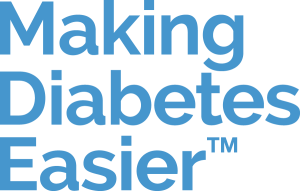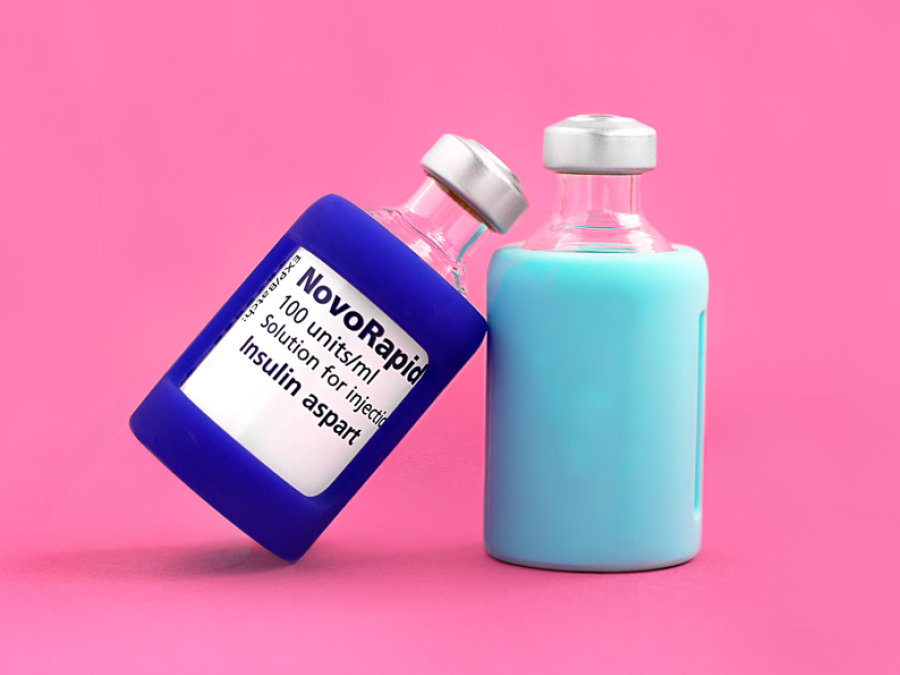What causes lipohypertrophy and how can it be managed?

What causes lipohypertrophy and how can it be managed?
Lipohypertrophy is a common complication of insulin therapy in people living with type 1 diabetes.1 It causes thick, ‘rubbery’ bumps at the site of insulin injection.1 People who inject insulin daily or frequently are most at risk.1
Lipohypertrophy can interfere with your blood glucose management and cause further complications.2 But, you can also prevent lipohypertrophy fairly easily, and in this guide, we show you how.1
We also clarify what lipohypertrophy is in more detail, explain what causes it and give you useful tips for managing it.
What is lipohypertrophy?
Lipohypertrophy is a common insulin injection site reaction, caused by repeated injections in the same location of your skin.1 It causes visible lumps or swellings, which feel soft-to-firm and ‘rubbery’ to touch.1,2
What causes lipohypertrophy?
Lipohypertrophy is typically caused by reusing the same injection site and not letting areas heal fully.1,3,4
‘Trauma’ to the tissue caused by repeated injections can thicken it, leading to lumps.1,3 Insulin also increases the production of fat, which may contribute to the development of these lumps.2,3
Once lipohypertrophy develops at the injection site, some people may be more tempted to use it, as the area becomes less sensitive to pain, but this can actually worsen the condition.1–3
Although lipohypertrophy is more common in people who take multiple daily insulin injections, using insulin pumps (which also contain a very small needle) can cause it too.4
Lipohypertrophy risk factors
According to some estimates, over 60% of people who use insulin therapy to manage their diabetes develop lipohypertrophy.1
Often, people with diabetes will choose one area on their body that’s less painful and more convenient for insulin administration, like the tummy, and continue to reuse it.2,3 Using a convenient place is okay to do, but failing to rotate the injection spot within this area (in different parts of the tummy, for example) can lead to lipohypertrophy.3
Other factors that may raise your risk of lipohypertrophy include:2,3
- Reusing the same needle repeatedly2,3
- Having daily injections more frequently 2
- Taking insulin therapy for a long time2
- Not injecting insulin properly3
- Using needles of the wrong length2,3
Having hypoglycaemia (low blood glucose), high haemoglobin A1c or a high body mass index (BMI) may also raise your risk.2
Lipohypertrophy symptoms
Lipohypertrophy looks and feels like a ‘rubbery’ swelling at the injection site.1
These lumps can be small, flat and barely noticeable, or larger bumps that stick out and can be seen with the naked eye.1,2 They’re usually painless and you can move them around.1
Lipohypertrophy complications
If you inject into an area with lipohypertrophy, it can stop your body from absorbing insulin properly and interfere with your blood glucose management.2,4,5 This is because the thick tissue under your skin can cause insulin to be absorbed more slowly and in an unpredictable way.1,2
This may result in surges in your blood glucose which, in turn, can lead to diabetes complications.2
Prevention: how to avoid lipohypertrophy
Here are some things you can do to help prevent lipohypertrophy:
- Change injection or infusion sites regularly.2,5 This is also known as ‘rotating’ sites and means making sure that your injections are at least 1 cm apart.1,5
- Get your insulin sites checked regularly for lipohypertrophy.1 Your care team should examine them as part of your yearly diabetes check-up.2 They’ll do this by palpating (feeling) the area.2,3 You can also check for lumps and swellings yourself by examining your preferred injection site.3
- Try to follow a pattern of site rotation that will give you enough time to heal.5 For example, if you choose the tummy as your injection site, you can use the left side of your tummy for 12 days (with each injection 1 cm apart), then the right side for another 12 days, giving each individual spot 24 days to heal.5
- Use a fresh needle each time you’re injecting insulin; never reuse the same needle.3,5 A new, sharp needle causes the least tissue damage and will also hurt less.5
- Taking fast-acting insulin instead of conventional insulin may help prevent lipohypertrophy.2 In one study, people who took regular insulin were 3.2 times more likely to develop the condition than those using fast-acting insulin.2
Lipohypertrophy treatment
There’s no specific quick treatment for lipohypertrophy, but there are things you can do to manage it.2 Prevention is key, but if you’ve developed lipohypertrophy already, you’ll need to stop using the injection area for a while, and it can heal over time.3
Take these steps to help reduce the swellings:2
- Don’t continue using the same insulin administration site
- Rotate your injection site
- Make sure you inject insulin correctly
Your healthcare team will show you how to administer insulin while you’re letting the area heal.2
Changing the type of insulin you use can also help in some cases.3 You can talk to your diabetes team to see if any changes to your insulin treatment could help.2
In rare and very advanced cases, surgery may be needed to remove the swollen tissue.3
Sources
- Kalra S, Jawad F. Lipohypertrophy. J Pak Med Assoc. 2016;66(6):779–80. https://pubmed.ncbi.nlm.nih.gov/27339591/
- Xu XH, Carvalho V, Wang XH, et al. Lipohypertrophy: prevalence, clinical consequence, and pathogenesis. Chin Med J (Engl). 2020;134(1):47–49. Published 17 Aug 2020. https://doi.org/10.1097/CM9.0000000000000970
- Kostrzewa-Zabłocka E, Karczewska A. Correct insulin injection: the role of appropriate equipment in lipohypertrophy prevention. Praktyka pielęgniarska i położnicza (ICNP). 2/2018. Available at: http://htl-strefa.com/wp-content/uploads/2018/10/The-role-of-appropriate-equipment-in-lipohypertrophy-prevention_10.2018.pdf
- Deeb A, Abdelrahman L, Tomy M, et al. Impact of insulin injection and infusion routines on lipohypertrophy and glycemic control in children and adults with diabetes. Diabetes Ther. 2019;10(1):259–267. https://doi.org/10.1007/s13300-018-0561-7
- Association of Diabetes Care & Education Specialists (ADCES), Pro Tips (and Tricks) for Easier and Better Insulin Injections. Accessed 21 September 2024. Available at: https://www.adces.org/docs/default-source/handouts/insulinrelated/handout_pwd_ir_protipstricks.pdf





